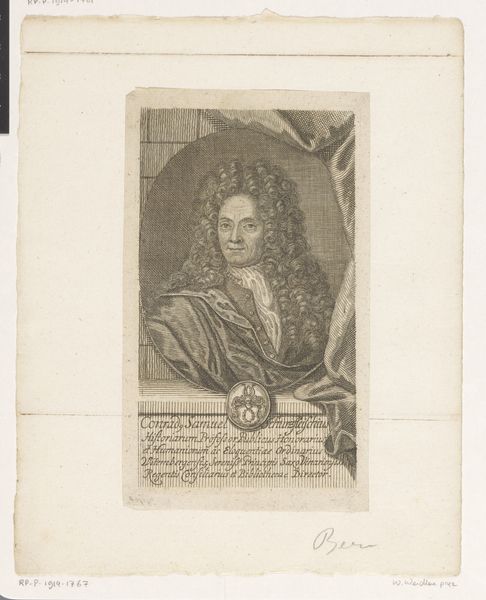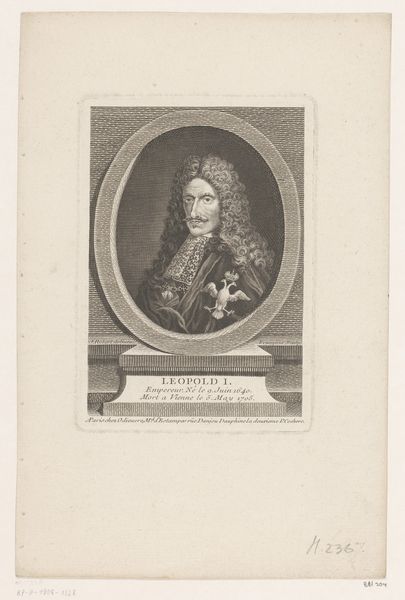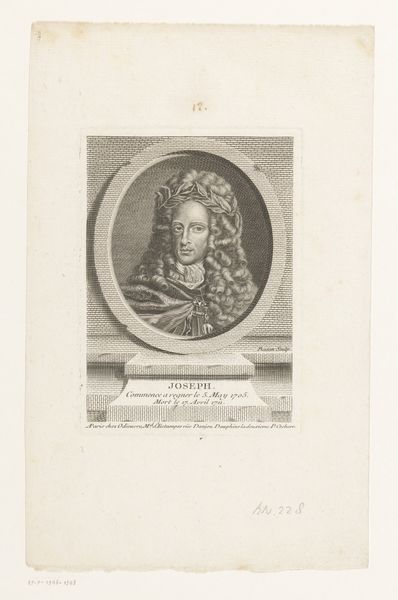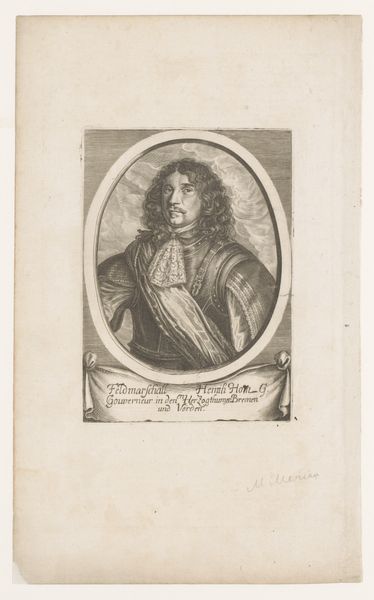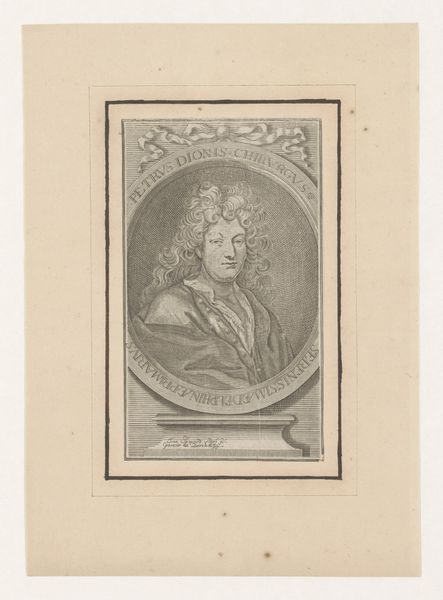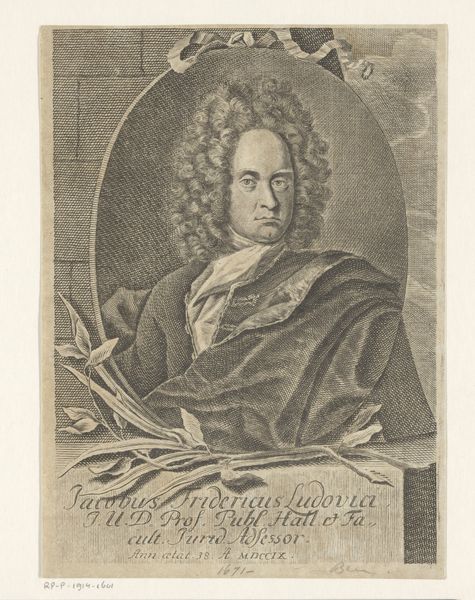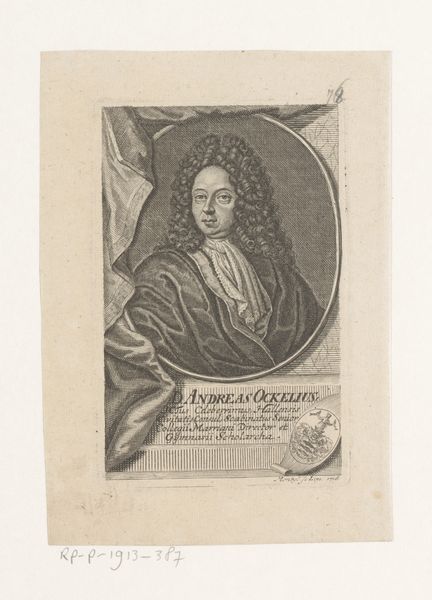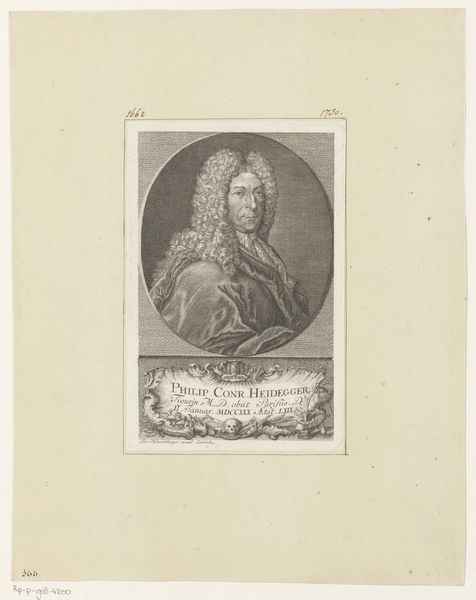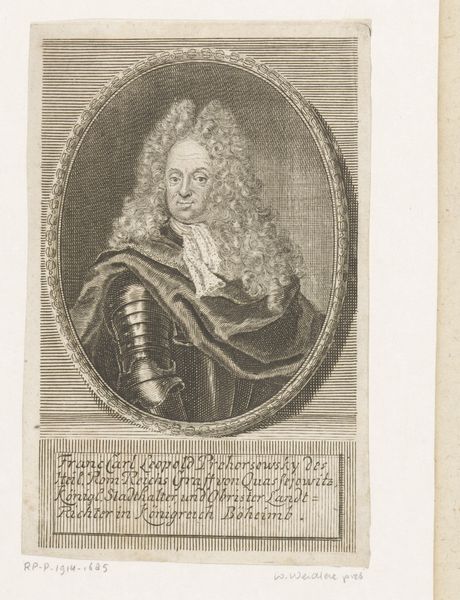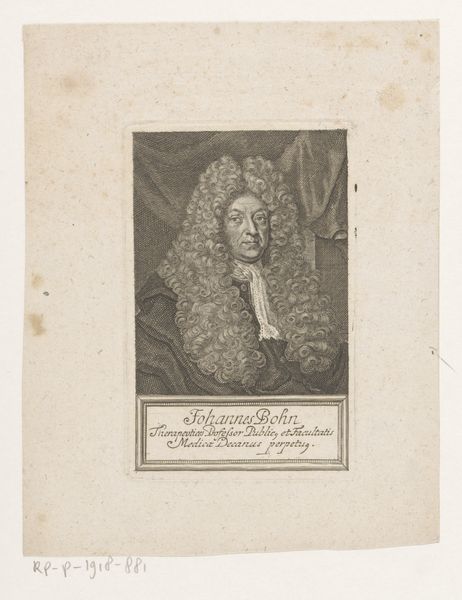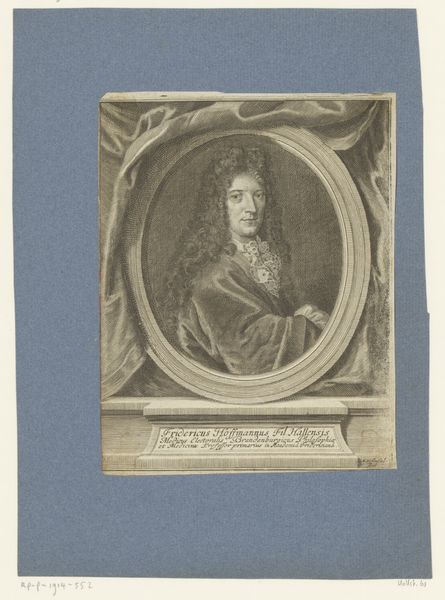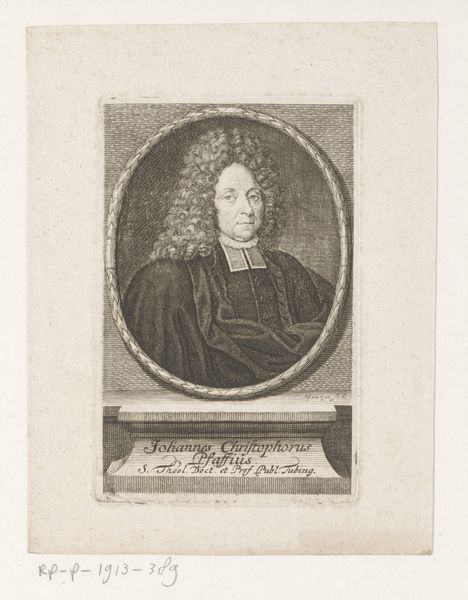
print, engraving
#
portrait
#
baroque
# print
#
figuration
#
engraving
Dimensions: height 142 mm, width 85 mm
Copyright: Rijks Museum: Open Domain
Editor: Here we have Johann Christoph Boecklin's "Portret van Salomo Cellarius," an engraving from 1701 currently held at the Rijksmuseum. The level of detail achieved in this small print is striking. I’m curious to hear your thoughts. What do you see in this piece? Curator: I see a fascinating intersection of status, power, and the printed image. Boecklin's portrait exists, first and foremost, within the context of the late Baroque, but who was Cellarius and what did it mean to create a lasting image? The inscription tells us he was a doctor of medicine. His attire speaks of class privilege, reinforced by the wig which indicates a level of social status attainable almost exclusively by men in his era. Why commission an engraving? To ensure legacy but more than that, what sort of social or professional advantage did he seek to consolidate by this action? Editor: So, you're suggesting this portrait goes beyond mere representation. It's also a carefully constructed statement of identity and social standing. How would that work at that time? Curator: Exactly. Consider how printed images circulated and reproduced knowledge, constructing social capital. This portrait wasn’t simply about capturing Cellarius' likeness; it actively participated in solidifying his position within a specific power structure. Editor: It makes me think about the limited agency people had over their representation back then, relative to today's ease with image manipulation and diffusion. What does this say of marginalized identities today? Curator: It challenges us to analyze the historical frameworks that underpin power dynamics. Examining portraits like this helps to dissect the societal structures that often exclude marginalized voices from shaping their narratives, past and present. It speaks to contemporary concerns regarding digital identity and questions who is left out of digital innovations because they do not conform with the norm. Editor: I hadn’t thought about it that way, seeing this portrait as a commentary on ongoing questions of power. I'll be sure to reflect further on how the control and dissemination of images relates to broader questions of equality and representation. Curator: Indeed. I hope it will now provoke some very important and contemporary questions!
Comments
No comments
Be the first to comment and join the conversation on the ultimate creative platform.

